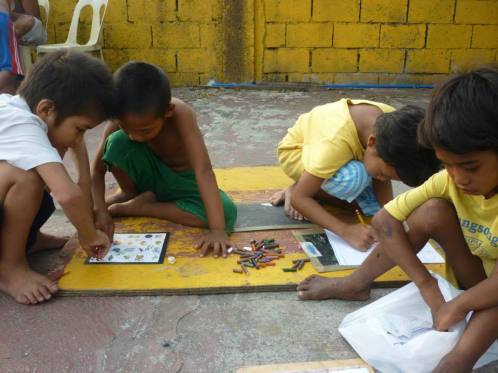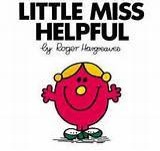http://es.calameo.com/read/003786544443ce46f5c70
ATD Fourth World Philippines
Wednesday, October 15, 2014
Thursday, June 5, 2014
Families living under Quirino Bridge strive to survive
http://www.rappler.com/move-ph/issues/hunger/58982-families-living-under-quirino-bridge-survive
Families living under Quirino Bridge strive to survive
by
Jodesz Gavilan
Posted on 05/26/2014 5:33 PM | Updated 06/04/2014 5:00 PM
Posted on 05/26/2014 5:33 PM | Updated 06/04/2014 5:00 PM

HOME. The busy Quirino bridge is home to more than 100 families. All photos by Jodesz Gavilan/Rappler
MANILA, Philippines – Manila has long been the
glimmer of hope for many coming from the rural areas. They abandon their
life in their hometown to seek a brighter future here.
Because of the absence of housing security, many resort to living in
informal settlements – idle lands and government infastructure. Most of
these places are already occupied by the same hopeful people.For several years, they have been facing the same financial, health, and housing problems. (READ: Informal settlers: Integration, not just relocation) And because of congestion and limited space in the big city, not a few squeeze into the unlikeliest of places.
The Quirino bridge is one such place. It is home to approximately 100 families from different parts of the country. No one would think that a functioning community exists under the short and narrow concrete stretch.
Shelters made of scrap wood hang from the ceiling of the bridge and just a few inches above the surface of the water. More than one family reside in each house, providing hot and tight living space.
They make do with what they have. Living rooms where they spend daytime double as their dining area during meals. At night, when the noise of the trucks above drown the sound of the rushing water underneath, they think about how to survive tomorrow.

RISKY PLACE. Shelters made of scrap wood hang only a few feet above the water of Estero de Pandacan.
Six children depend on Gilda and her blind husband who contributes money from begging in the streets of Manila. A resident for 25 years now, she has gained a lot of experience in trying to survive each day.
In 2005, they were relocated to Cabuyao, Laguna only to return under the bridge after a year due to a lack of job opportunities and access to basic social services.
"Malayo yung center at ospital na may bayad pa," she lamented. "Kapag may immediate na sakit tulad ng LBM, kailangan mo pa mag-tricycle nang mahal." (Centers and hospitals are really far away, sometimes they charge, too. If you have an immediate concern such as LBM, you still need to pay a hefty price for tricycle fare.)
Temporary relief
Her family became one of the 50 family-recipients of the Modified Conditional Cash Transfer (MCCT) of the Department of Social Welfare and Development (DSWD) last February 2013.
The MCCT aims to help families who are considered to be among the "poorest of the poor," such as those who live in informal settlements. The program is intended to help these families overcome their present situation.
Families displaced by conflict and calamities, belong to Indigenous Peoples' group, and have children with special needs such as disabled, abandoned, and working children are also covered by this modified 4Ps or Pantawid Pamilyang Pilipino Program.
The 4Ps offers the same benefits but is intended primarily for families with children aged 0-14 years old and/or a pregnant mother.
The MCCT program usually spans a year, enough time for the poorest families to improve their situation. After a year and the expected improvement in the quality of their lives, families under the MCCT program are considered for the original 4Ps.
For Gilda, the MCCT meant relief.
"Malaking tulong talaga iyon kasi puwedeng pandagdag sa pagkain, pandagdag sa school at pambayad ng ilaw," she said. (It's a big help since it can be used to buy food, send my children to school, and pay electricity bills.)
Another beneficiary of the MCCT, Lyda, who also lives under the Quirino Bridge like Gilda, used to receive P1,400 a month under MCCT. This amount was already a huge contribution to the meager income her husband, a street vendor, brings home for their 5 children.
"Panigurado na rin na hindi magugutom iyong mga anak ko," she said. "Hindi na palaging hati sa konting pagkain." (It's already an assurance that my children won't get hungry. There is no need to always share.)
Lyda's eldest child is already a mother of two at 19 years old. Her 20-year-old partner does not have a stable job. They both still depend on their parents because of their young age. (READ: Young and pregnant)

FUNCTION AS A COMMUNITY. Despite the unusual setup, the residents of Estero de Pandacan still go about their daily lives.
Gilda and Lyda made sure that they followed the rules set by the DSWD to remain in the program. Among the requiremements was regular check-ups of their children to ensure their health and nutrition.
Both mothers did not want to lose one of the most helpful things in their lives then, just like the other mothers in their community.
However, problems began to emerge as early as the first month when they were supposed to receive their pay-outs from the DSWD. The money they were supposed to receive in February 2013 was released two months later. They resorted to borrowing money just to be able to eat every day.
Some families have bowls of instant noodles as their daily meal because of financial constraints, resulting in nutritional issues among children. There are those who sometimes sleep at night hungry. (Read: Lessons from everyday hunger champions)
Once they finally receive the money, a huge part of it goes to paying debts they incurred during the months they had no resources.
"Kung tutuusin, malaking pakinabang talaga kung regular nilang maibibigay sa mga pamilya," Lyda said. "Minsan pambayad utang na lang." (It's definitely a big help if they give it regularly to families. Sometimes we really use the money to pay off debts.)
The problem with the MCCT worsened when the payouts stopped in September 2013. According to Gilda, their current contract was supposed to run until December of the same year.
Her co-parent leaders contacted the local DSWD office only to be given vague answers to their questions. They were told that there was a problem with the papers submitted by the ones involved in the profiling of families.
"Binibigyan kami ng petsa pero hindi naman natutuloy," she said. (We're always given dates only for them not to push through.)
The families of Quirino Bridge were expecting to be mainstreamed to the original 4Ps after the supposed end of their current program in December 2013.

ALL IN A DAY'S WORK. A resident's products hang from the ceiling of his home.
"Pinanghawakan ko na talaga yung sinabi nila na makukuha namin iyon kung may mag-aasikaso sa amin, kaso wala pa rin," Lyda said. (I'm holding on to what they said that we will receive the money if there would be someone to work on this, but still there's no one.)
Other residents have started to feel as if they're being ignored by the same government officials who promised to help them in the first place.
"Sasabihin sa amin pasalamat nga kayo meron (CCT) pero sa akin di yan katwiran," one parent-leader narrated. "Mag-usap bilang tao dapat." (They tell us to feel grateful already since we have CCT but that's not an excuse. They should keep their word.)
A chance at a fresh start
Unlike the Department of the Interior and Local Government's Flood Plan that gives P18,000 to relocated families from the 8 priority waterways in Manila, the residents of Estero de Pandacan will allegedly only receive a 40-square meter house and a bag of groceries for one day. (READ: Yearend target: Relocation of 20,000 Manila families)
Families who are relocated to Bulacan and Laguna will not receive any financial support, only housing, which they will eventually pay rent for after a year, in addition to water and electricity bills.
Relocation of informal settlers has long been an issue in the country. They complain that they are left with nothing to start with, no money or job opportunity, in the places they're transferred to. Family members, usually the fathers, go back to the city to work. (Read: Failed relocation in 'Bayan ni Juan')
The Estero de Pandacan families are expected to be relocated in the first few weeks of June. As the date approaches, they are doing their best to brace for the possibility of having nothing to start their new life with, especiallty since they have not been receiving their MCCT payouts.
Two months ago, Gilda and Lyda became "Avon Ladies" or a direct seller of personal care products to support their families in time for their relocation after "losing" MCCT support.
"Maliit lang talaga ang kita tapos hindi pa regular kaya hindi maaasahan," Gilda explained. (The income is low and it's not regular so you really cannot depend on it.)

SMALL LIVING SPACE. Shelters usually house two families.
She's still looking forward to the promised money from the MCCT as she's unsure how things will be after her house is demolished. She heard from her former neighbors that financial opportunities in the relocation sites were next-to-nothing.
Lyda's family is just one of the many members of the Estero de Pandacan community that considers the 4 months' worth of MCCT they are yet to receive as their key to a brighter future once relocated.
"Syempre magagamit iyon pang-negosyo, pang-kapital, lalo na't bago ka pa lang sa lugar na pupuntahan," she told Rappler. (We can use it to start a business since we're new to the relocation site.)
Meanwhile Gilda, despite wanting to be optimistic about the situation, couldn't help but feel as if there's no end in sight to their problems.
"Kailan pa? May pag-asa pa ba?" she asked. (When? Do we still stand a chance?) – Rappler.com
Thursday, December 19, 2013
Merry Christmas and Happy New Year 2014
Merry Christmas and Happy New Year to everyone.
May these times be made of joy, rest, renewal and peace!
May these times be made of joy, rest, renewal and peace!
Tuesday, November 19, 2013
Our Hearts Go Out to the Philippines
"Came the high winds,
High winds rampaging, enraged.
They departed, leaving their scent of wild animals:
Tears, ruin and mourning."
High winds rampaging, enraged.
They departed, leaving their scent of wild animals:
Tears, ruin and mourning."
By Florette Morand
For some time now, people in the Philippines have been saying, "Our lands will soon lie totally beneath the water." Typhoons and earthquakes obliterate homes, leaving millions of children and their parents at the mercy of the elements. And when the waters ebb, after villages are buried beneath the mud, the media looks elsewhere, leaving struggling families behind to face new challenges in a silence born of overflowing sorrow and injustice.
As terrible as foretold, Haiyan/Yolanda’s winds have shrouded the earth.
Barricades, hiding—paltry efforts.
The high winds departed, having destroyed in a few hours
The love of a lifetime, _The fruit of hard labor,
Hope for a better tomorrow
Barricades, hiding—paltry efforts.
The high winds departed, having destroyed in a few hours
The love of a lifetime, _The fruit of hard labor,
Hope for a better tomorrow
The high winds departed,
Leaving only bleakness—
But the heart of humanity
Continues to beat.
Leaving only bleakness—
But the heart of humanity
Continues to beat.
Robing themselves with courage,
Amid the debris still swirling,
Children, youths, women and men
Go in search of what they lack.
Amid the debris still swirling,
Children, youths, women and men
Go in search of what they lack.
For many, the passage of time ends hope of reuniting,
Or being able to honor the remains of a loved one.
The passage of time for survivors is nevertheless a fine thread
That says tomorrow is coming.
Or being able to honor the remains of a loved one.
The passage of time for survivors is nevertheless a fine thread
That says tomorrow is coming.
Everywhere up and down the Philippines, and beyond its borders,
Children, youths, women and men,
Some of whom know the violence of life constantly buffeted by poverty,
Have changed their priorities to ask: how can I help?
Children, youths, women and men,
Some of whom know the violence of life constantly buffeted by poverty,
Have changed their priorities to ask: how can I help?
In the chaos, how can we find the way forward that brings back what matters most and preserves the dignity of people who have lost everything, who are distraught?
Without knowing how to join them in their suffering and courage, we are thinking of a recent dialogue between people who live in extreme poverty in Manila and Filipino government officials. It was on 23 October, concluding events for the World Day for Overcoming Poverty. We were very struck on that occasion by the enormity of the challenges being tackled by the government in a country made up of islands in a time of rising sea levels. For the government’s flood management plan in Metro Manila, it has identified 104,000 families living less than 3 meters from a waterway. The president plans to support relocating all of these families by 2016 to places where earning a decent livelihood will be possible.
Several participants explained why they live in informal settlements considered “danger zones” along waterways, for instance in shanties hanging from the undersides of bridges directly above rivers, because this is where they have livelihoods that enable them to support their families. During the dialogue day, Undersecretary Jude H. Esguerra III, of the National Anti-Poverty Commission, spoke of the government’s humility in the face of this challenge. He referred to families who were relocated two years ago following a typhoon, saying: “Today we have realized that even two years later, their children have still not been able to return to school.” He spoke of other challenges faced in that relocation that, despite planning, the government had not anticipated, lacking sufficient knowledge of how people live when they are condemned to barely surviving. He said, “We need to formalize our promises to the poor and to strengthen their voice in the president’s cabinet. Our agencies need to be more accountable.”
Today, the challenge for the Filipino people and their government is even greater than before—but many others are expressing solidarity.
Both the grief and the bravery of the families stricken by this typhoon remind us of what we learned from families in New Orleans when it was battered by the wrath of Hurricane Katrina, and from the families in Haiti, whose hopes and dreams were shattered in the half minute of an earthquake. This resilience to disaster reminds us of what we learn wherever we are, with families who must survive day-to-day with the uncertainty, chaos and emergency of each moment: The most important thing is believing in our brother- and sisterhood so that it can guide us to seek out whoever is the worst off, the one who will be lost if we do not try. It is this person who we recognize as someone with aspirations and plans, despite destitution, someone whose experience is of value to others. We recognize this person as a partner for whatever will be undertaken because this person’s contribution is the very foundation of a future where every person’s inalienable dignity will be respected and where we will all live in harmony.
Isabelle Pypaert Perrin, Jacqueline Plaisir, Diana Skelton, Jean Toussaint
International Leadership Team.
International Leadership Team.
Partners in Development: a day of dialogue among civil society, the Filipino government and people living in poverty in the Philippines

“Why do the poor choose to remain living under bridges, alongside waterways or railways, in the streets, in parks, cemeteries, and elsewhere even though they are very much aware that it is dangerous, dirty, smelly and in short, ugly? Who would want to live in this kind of place? Even we, ourselves, do not want to. However, we are powerless because this is all we can afford—and most importantly, these informal settlements give us access to places where we can earn our livelihood. Here, even if you have not finished school or had any education at all, you will manage to survive. Now about the people whose homes are demolished, why do they really come back to the places they were taken away from? What is really wrong with what the government has done that was intended to improve their lives? Certainly, the government wanted their lives to improve so they transferred them to a decent place. But if you really look at the lives of the relocated people, did they prosper, did their lives become better?” —Raul Detona, community actor in ATD Fourth World’s participatory research
Mr. Detona’s questions were among those that launched a day-long dialogue this week co-organized by UNICEF and ATD Fourth World. It brought together many civil society organizations, and members of the Filipino cabinet and other government officials—about 100 people in all. Undersecretary Francisco L. Fernandez, of the Department of the Interior and Local Government spoke of the vast challenge being addressed by the government: for their overall flood management plan, they have identified 104,000 families living in informal settlements considered “danger zones” along the capital’s waterways. The president plans to support relocating all of these families by 2016. Mr. Fernandez added, “Our economic growth has been very strong, but it hasn’t trickled down and poverty has remained the same here for two decades now.” The plan is for some of this economic growth to support fighting poverty and relocating families to places where earning a decent livelihood will be possible.
Undersecretary Jude H. Esguerra III, of the National Anti-Poverty Commission, spoke of the government’s humility in the face of this challenge. He referred to families who were relocated two years ago following a typhoon. “Today we have realized that even two years later, their children have still not been able to return to school. Some of their young people have turned to prostitution. And the local population in the area where they were rehoused was resentful of them for the overcrowding. We need to formalize our promises to the poor and to strengthen their voice in the president’s cabinet. Our agencies need to be more accountable.”
UNICEF’s Chief of Social Policy, Augusto Rodriguez, presented findings from an ongoing UNICEF study about Filipino children suffering from various dimensions of poverty. UNICEF co-organized this workshop with ATD Fourth World to create a venue where programs addressing poverty could be assessed with the input of their intended beneficiaries to help ensure that they really improve the lives of people in poverty.
Another of the community actors in ATD Fourth World’s participatory research, Charlene Igano, spoke more about the question of livelihoods: “Whenever we ask about livelihoods in the relocation sites, they tell us to learn how to fish. Do they think we are lazy? We have our means of livelihood: as street vendors, rain or shine we are selling in the streets. Some scavenge or collect trash to earn for their family. Here, even if we have not had any schooling, we earn somehow. But if we are transferred to relocation sites, what will our livelihood there be? If we ever ask questions or give ideas, nothing changes in the laid-out projects, the original plan is what is followed anyway.” Marilou Villota, another community actor, added: “I wash clothes for a living. My husband is a rust-remover for fishing boats. But no matter what our efforts are, often our work is forbidden. For example, to sell the paper we scavenge, we need to dry it well so that we can sell it at a good price to junk shops—but we are forbidden to dry it in the streets because they say it is not a pretty sight!” Other crucial issues addressed throughout the day included: what constitutes genuine participation in relocation programs; stigma and discrimination in school; and the issue of school fees and Conditional Cash Transfers intended to address these costs.
One of day’s co-hosts, Nina Lim Yuson, president of ATD Fourth World and of the Museo Pambata where the event was hosted, summed up the events this way: “The Philippines do not lack for people’s initiatives and organizations. The gathering of the UNICEF-ATD event at the Museo Pambata showed this. The Open Forum was too short as many voices wanted to be heard and questions posed to the civil servants (from education, local government, housing, social welfare, National Anti-Poverty Commission, etc.). That the poorest do not have a venue to share their own worries, concerns and daily struggles was a recurring thought, especially during the break-out session. Cora de Leon, former Social Welfare Minister, who was present told me that we must have more of these conferences with the poorest in the forefront. I also liked that Mary Racelis, moderator for the day, made sure that the English portions would be translated in Tagalog. The due respect and acknowledgment of the poor was there. I have not attended such a session before with the poorest in session, civil servants and persons working along with the poorest who had clearly come to learn from one another. It was a day to be well proud of!”
Let's Just Help the Nice Ones
 I still remember my mother, returning one day from the bakery, all turned up side down – a poor woman named Andrea (“And even more, a woman of ill repute!” added my mother) had made a scandal after the baker had “given” her a loaf of bread from the day before (which was at any rate unsellable). She had shouted at the baker that, “She should eat her own bread if she thinks it’s so good!”
I still remember my mother, returning one day from the bakery, all turned up side down – a poor woman named Andrea (“And even more, a woman of ill repute!” added my mother) had made a scandal after the baker had “given” her a loaf of bread from the day before (which was at any rate unsellable). She had shouted at the baker that, “She should eat her own bread if she thinks it’s so good!”
“It’s really outrageous,” my mother cried. “Those people, they just don’t deserve our help!”
I wasn’t in the bakery that day, and I didn’t know Andrea, but I think I know her through all the people I’ve met over the past few years spent with ATD Fourth World. Take Ate Tela for instance, who lives like hundreds of families, under a bridge, above a sewer, without a roof, in Manila. Once more this year, despite all the interventions of social services, her children continue to miss school to beg for coins at the windows of cars.
These are the poor for whom society didn’t “take”, with whom aid programs don’t “work.” Basically the ones who resist instead of cooperating! “Those people, do they even want to be helped?” we cry eventually in frustration.
To me, it is a fake question because it puts all the problem on the side of those “in need.” It’s a comfortable idea for anyone disposed to “help” – whenever the offer of help isn’t welcomed with gratitude, or is refused, it’s the recipient who is called into question. Only very rarely does the person or the organization behind the offered assistance, let alone society in general, call itself into question.
Let’s get back to Ate Tela in Manila – despite informational meetings and even threats from social services, she keeps sending her children regularly on the streets to beg. How can we understand a mother who voluntarily denies her children schooling? We don’t have an answer. So we invited her children and others from “under the bridge” to the “Street Library.” Via the children, we were able to build a relationship with Ate Tela. It was hard work at the beginning, she was clearly wary of being “preached to” yet again. But then suddenly a change happened. She came more and more often “Just to take a look,” she told us. That simple look became, after a few months, active participation, and then later even taking responsibility in the street library.
It turned out that in fact, Ate Tela was an iconic figure for the families under the bridge. It was to her that they confided their problems, and she would accompany them if necessary to one social service office or the other.
Along with other families, she had participated in a study we conducted seeking to evaluate the Millennium Development Goals. Ate Tela knows better than anyone that school is the key to a better life. But better than anyone too, she knows the reality of most poor children who go to school – they go to school, but they learn next to nothing! It’s logical then that in times of need, children miss school to support their family.
Last June, that conclusions of the study were presented to the United Nations in New York. Ate Tela and the others from under the bridge didn’t become any richer for it! But a fundamental change did come about in them. The sense of being superfluous, of being unheard, was replaced by respect, confidence, self-esteem.
The reaction of Andrea which had so shocked my mother, was it that of a “spoiled child” who refuses bread? Or was it the last piece of self-respect that she wanted to save, telling us that she didn’t want to be satisfied anymore with our “charity?”
That is why I love the Andreas of the world so much – they force me to do a total change of perspective – to turn a problem into an opportunity for humanity!
Dogs, electric shocks and poverty
 I stumbled upon the concept of “Learned Helplessness” almost accidentally and I promise that it has something to do with dogs, electrical shocks, poverty and human beings.
I stumbled upon the concept of “Learned Helplessness” almost accidentally and I promise that it has something to do with dogs, electrical shocks, poverty and human beings.But first, the theory
We owe this concept to two North American psychologists: Martin Seligman and Steven Maier. They did some experiments (here animal lovers might get very angry, but please continue reading as you might be happier at the end of the text….). The two men and their team conditioned dogs (that’s a change from the ‘rat experience’) to expect an electrical shock after hearing a tone. (I agree this is not very nice, here is the phone number of a group called “Animal World” dedicated to the welfare of animals: 901-791-2455.)
After the dogs were well conditioned, they were moved to a box (hopefully a big enough one), separated in the middle by a low barrier. The dogs were on the right side. On the left side, there was no electricity, no electric shocks.
 Did the conditioned dogs jump over the barrier? No, they did not. They did not even try. They did not even try when other companions of the same breed (who had never received shocks or only sometimes received shocks, lucky and half lucky them) were placed in the same box, and found out the trick by jumping over the barrier to safety.
Did the conditioned dogs jump over the barrier? No, they did not. They did not even try. They did not even try when other companions of the same breed (who had never received shocks or only sometimes received shocks, lucky and half lucky them) were placed in the same box, and found out the trick by jumping over the barrier to safety.So what is the link with poverty here?
Am I trying to say that poor people are like dogs? Well, obviously they are not. And if they were, we would all be like dogs as well. I would choose to be Labrador, black preferably, because they are my favorite.
No, what I am trying to say, and actually it is not me saying it, but researchers and scientists, is that when people live in long-lasting and extreme poverty, it is highly probable that, having received so many electric shocks throughout their lives, they might come to a point in which they are convinced and expect that nothing they do will change anything in their situation.
So you have understood that I am not comparing dogs with the poor, but electrical shocks with extreme poverty.
Let’s go back to the dogs.
Let’s go back to the dogs.
The first time Isaac (that’s the name of the dog, who, by the way, was a great-great-great-…..grand-father of Jesus, two respectable men) received the shock, what did he do? I bet you some 10-billion Filipino Pesos, that he jumped, shouted and howled (he’s a dog), and tried to escape in order to put an end to this highly unpleasant experience. The shock stopped, but without him, out of breath, being in the position to understand how it started and how it stopped.
We have to say here that Isaac is from all angles a standard dog. He is not cleverer or more stupid than the average. In short he is like you and me (well, of course, if we were dogs).
Isaac experienced some moments of respite, but again, out of the blue, the shock started again. He jumped and howled even louder than the first time, but nothing happened. Moreover the shock stopped when he was not trying anymore to avoid it.
Etc,etc, etc, for many sessions, until Isaac, passing from the rank of Jesus’ ancestor, turned into a passive self, not even trying to make one single movement to stop the shocks: he knows they will occur again, he has learned he cannot do anything about it.
Let’s go back to the humans.
The first time Rebekah (dear wife of Isaac in the Bible, not in this story, obviously) remembers having experienced frustration, it was when she wanted to eat ‘hotsilog’, which is composed of fried rice, egg and hot dog (one of my favourites by the way, even though I prefer tosilog). But her parents told her there was only rice with half an egg each.
They gave her P10 for her baon for school. She thought to ask her friend to share the cost so that each would eat half of the hotdog. Rebekah so much wanted to know the taste of it. But her friend had no money on that day and nobody else agreed to share with her: “we don’t share with squatters, you are all thieves”, was what some said.
 We have to say here that Rebekah is from all angles a standard girl of 12 years old. She is not cleverer or more stupid than average. In short she is like you and me (and whether you are a woman or a man, doesn’t make much of a difference).
We have to say here that Rebekah is from all angles a standard girl of 12 years old. She is not cleverer or more stupid than average. In short she is like you and me (and whether you are a woman or a man, doesn’t make much of a difference).
Frustration was more often present at school. Despite all her efforts, she was failing in too many subjects. It was already the second time she was in grade 4 and again, she would not pass. She started to be teased by classmates and even the teacher for her older age. Having to study using candle-light, with the heat, moisture and mosquitoes never ending their bites, was not helping. Her parents were trying to help sometimes but they could not do so much.
 Her frustration over the following months grew bigger and little by little she put fewer efforts in studying, until she dropped out. She looked around her, at her parents and neighbours: Everyday they were waking up early, doing odd jobs until night fall, but they still didn’t have enough to feed their children. The only time she ever ate hotdog was a few years ago when a charity group had their Christmas outreach and treated them to fast food. The cheapest meal there was hotsilog.
Her frustration over the following months grew bigger and little by little she put fewer efforts in studying, until she dropped out. She looked around her, at her parents and neighbours: Everyday they were waking up early, doing odd jobs until night fall, but they still didn’t have enough to feed their children. The only time she ever ate hotdog was a few years ago when a charity group had their Christmas outreach and treated them to fast food. The cheapest meal there was hotsilog.
She also looked at the other youth and adults around, who from morning to evening were not doing much, looking gloomily around.
Rebekah started to be convinced that no matter what she does, her situation will not change; she is internalizing that she cannot do anything about it.
Let’s go back to….life.
Can someone explain why it is easier for me to make jokes about a dog receiving electrical shocks during an experiment (again, my apologies to the animal lovers) than about a girl who already looks helplessly towards her future?
So what is the solution?
To stop the helplessness felt by Isaac, the scientists simply have to stop pressing the button. Thank you to everyone who called the phone number mentioned above!
And what can be done to stop the helplessness of Rebekah? xxxx simply have to xxxx (hummm, I need your help here: “who” has to stop or start doing “what”? What is the phone number?)
The website “Animal World”
This website (a very nice one by the way) gives part of the solution: “Animal World is a non-profit organization dedicated to the welfare of animals and is working with organizations, decision makers and the public-at-large to bring about awareness as to the plight of the animals of our world. Our mission is to create a better understanding and underscore respect for all the planet’s precious creatures through a strengthening of communities. Mobilizing citizens, working with schools, youth groups, and governors in each state, Animal World is creating a new direction to advance the greater good through exciting progressive strategies that are creating a movement.”

Now, let’s change the name “Animal World” into “A World without Poverty” and the word “animals” into “humans” and we may get some draft of answers as to the ‘who’ and ‘what’. Just the phone number is still missing, but you can try to dial (0063) 2 563.93.12
For an ending
I need to clarify that in my life I have had 4 cats, 2 dogs and 1 piggybank (…ah no! it was a guinea pig) and when each of them died (of natural causes), I cried, and I buried them with a little ceremony and flowers.
Subscribe to:
Posts (Atom)








